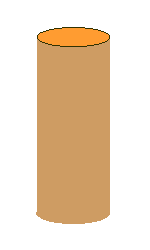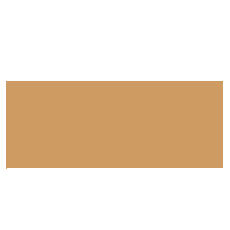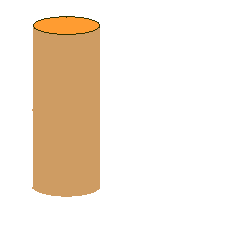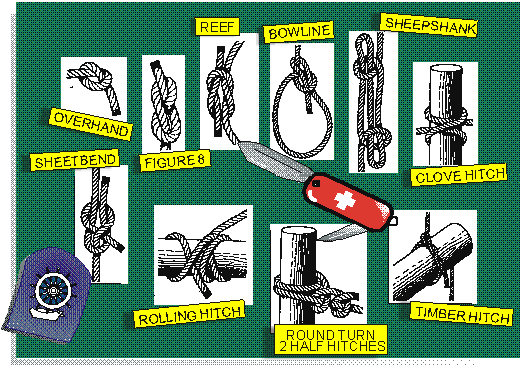 |
The Overhand KnotThe overhand knot is the starting point for many knots and is used in tying your shoes.
|
 |
The Figure 8The figure 8 knot forms the end in a line which prevents that line from slipping through a block.
|
 |
The Reef KnotThe reef knot used to join two ropes of equal size...and it unties easily, even when wet. When this knot is
tied improperly it is called a GRANNY knot!
|
 |
The BowlineOne of the handier knots in sailing, the bowline forms an eye or loop in the end of a line. In sailing, it connects the JIB SHEETS (lines/ropes) to the JIB (foresail).
|
|  |
The Sheep ShankThis complicated looking knot is the SHEEP SHANK. By forming this knot a line can be temporarily shortened and then quickly shook loose! |
 |
The Clove HitchThis clove hitch can be tied with one hand and is used to secure a line to a post or to tie a fender to a life line.
|
 |
The Sheet BendThe sheet bend is used to join 2 ropes (lines) of unequal size. It oftens connects a towline to a PAINTER.
|
 |
The Rolling HitchThe rolling hitch can be used to connect a smaller rope to a larger rope or spar.
|
 |
The Round TurnThe Round Turn and 2 half hitches. An excellent knot for tying the painter (a boat's bow line...not an artist!) to a ring or post.
|
 |
The Timber KnotAs the picture suggests this knot is handy for lifting large logs and timbers, or spars.
|









